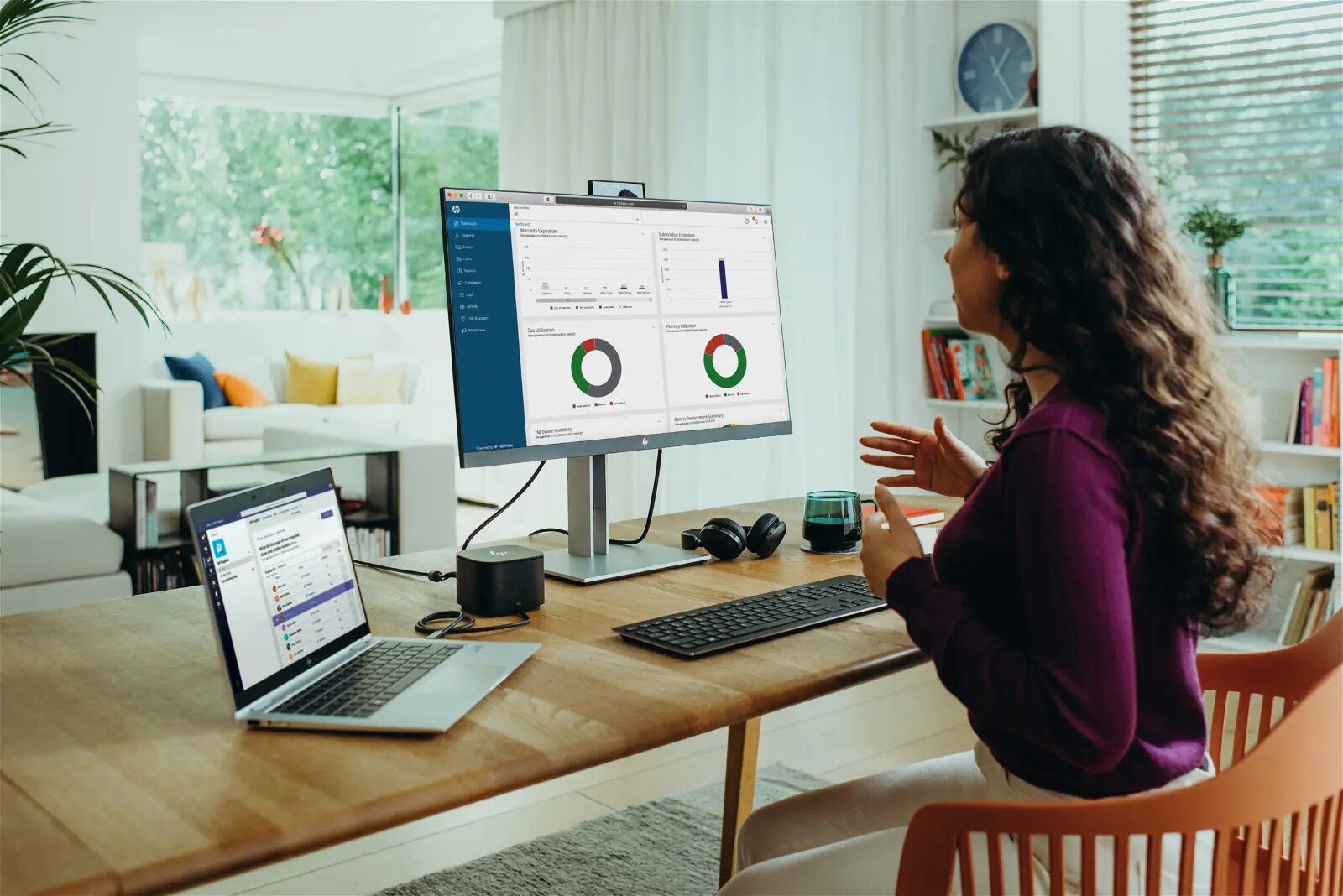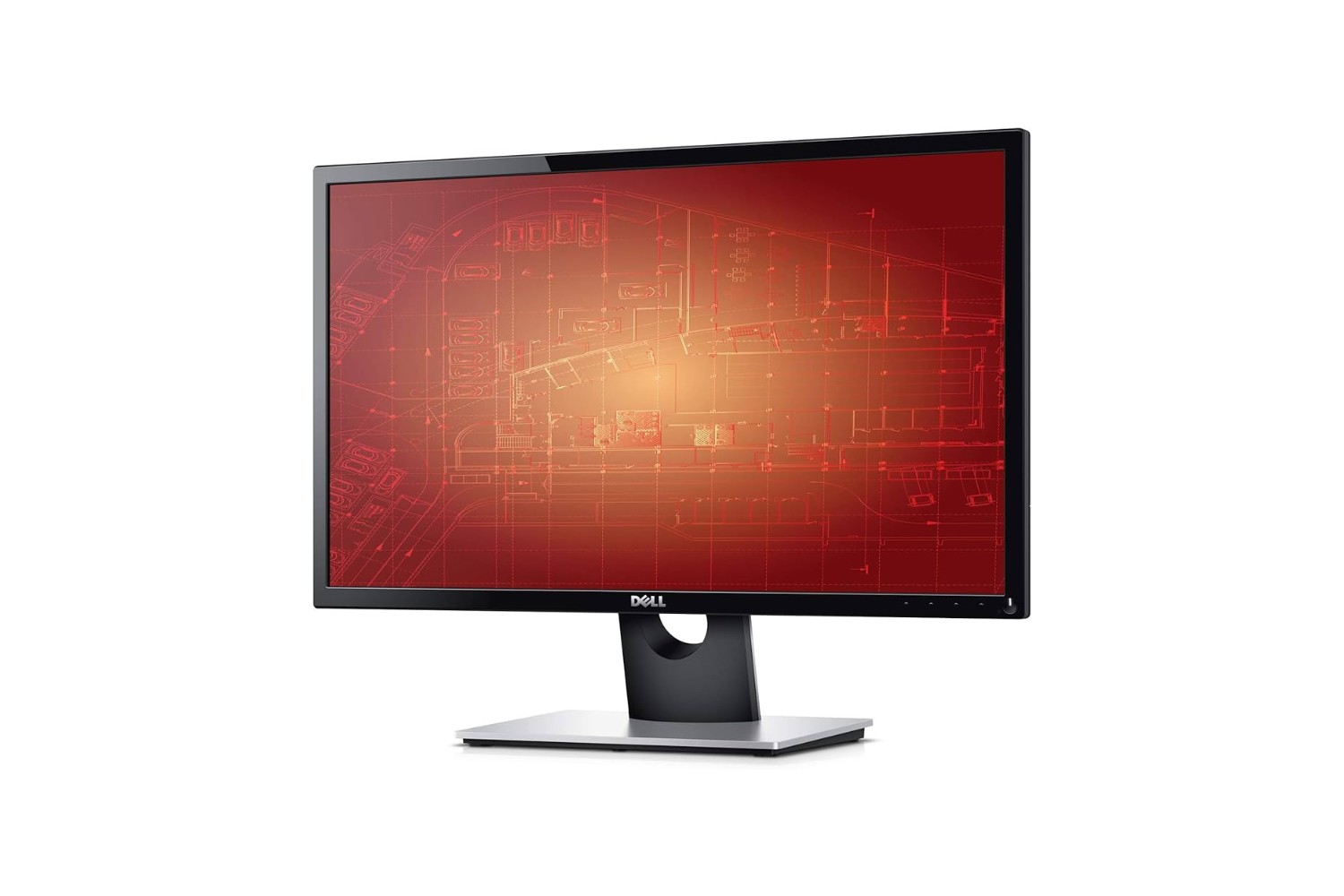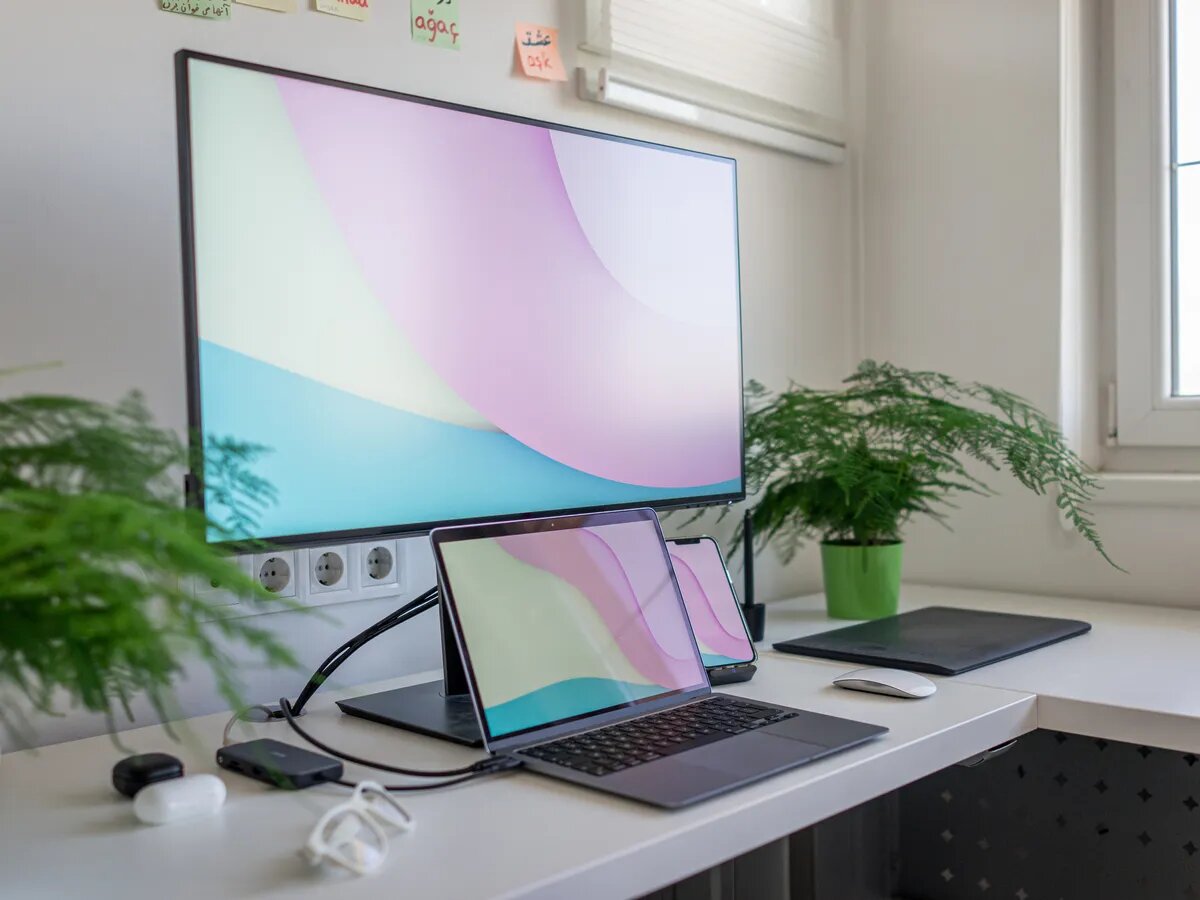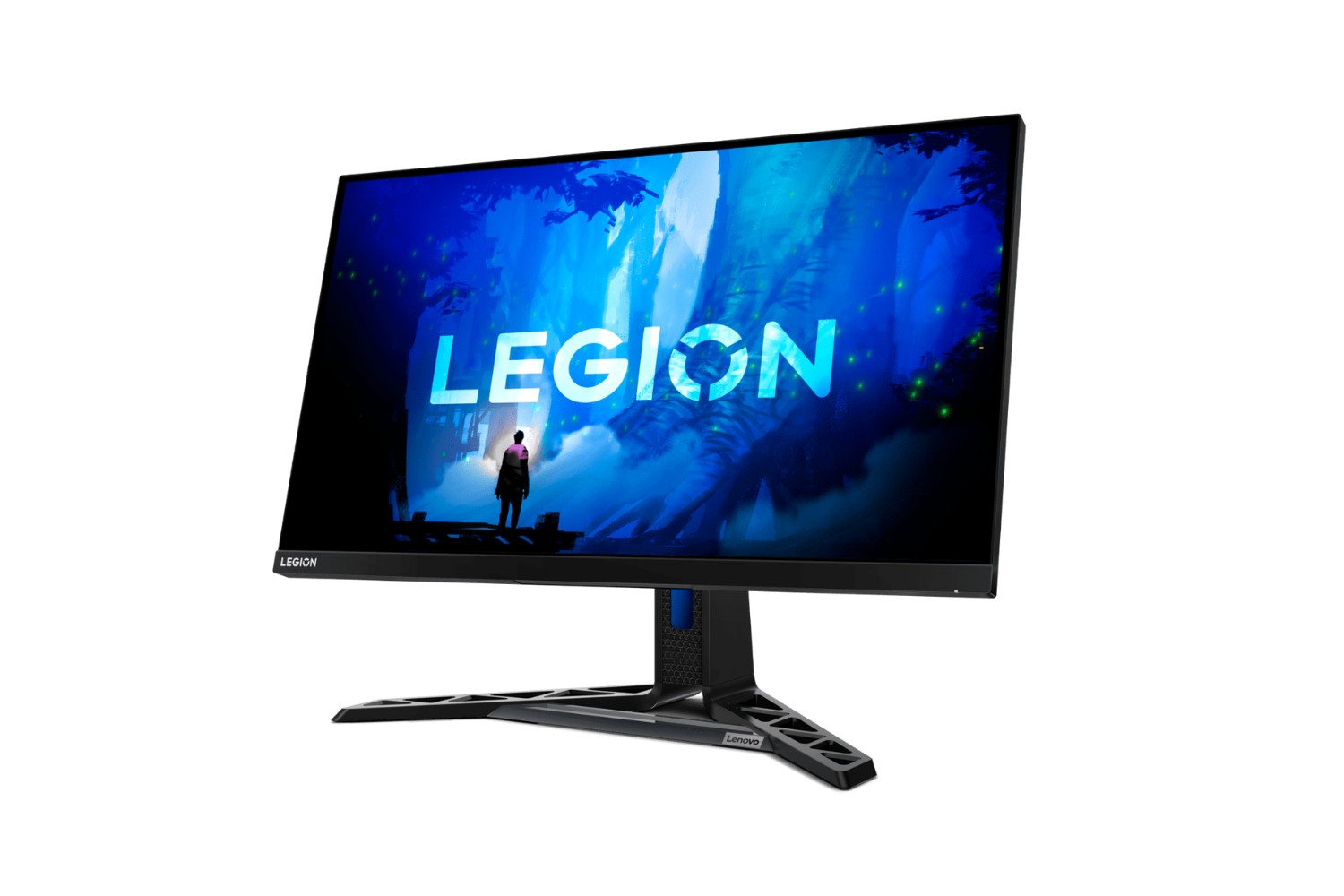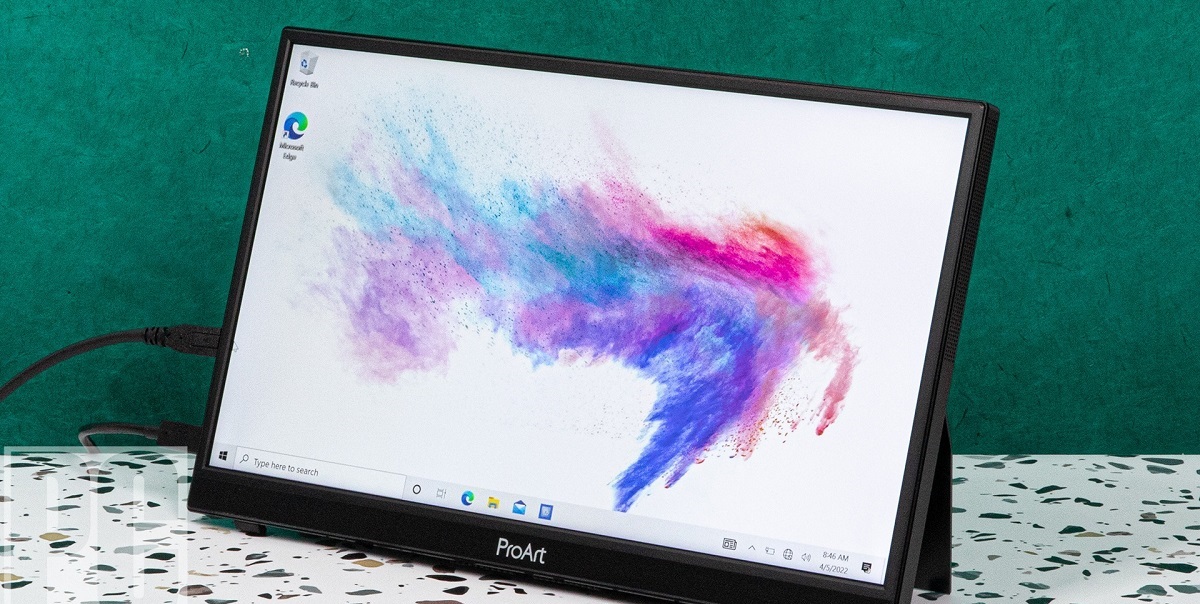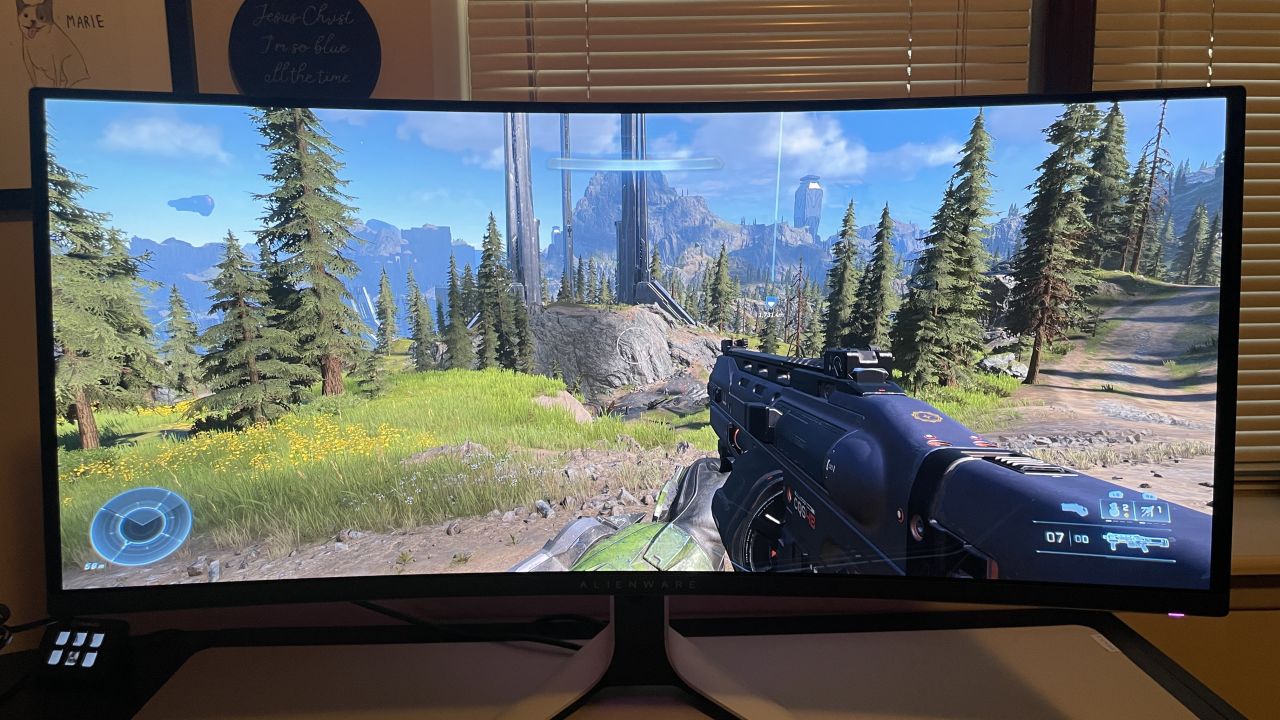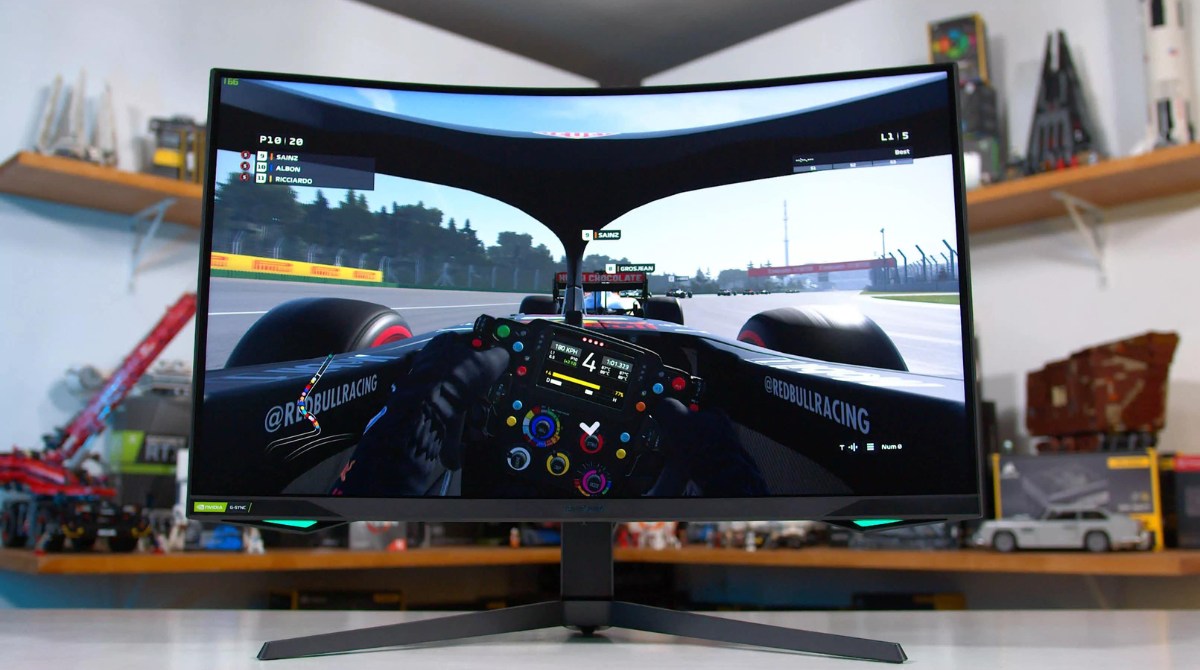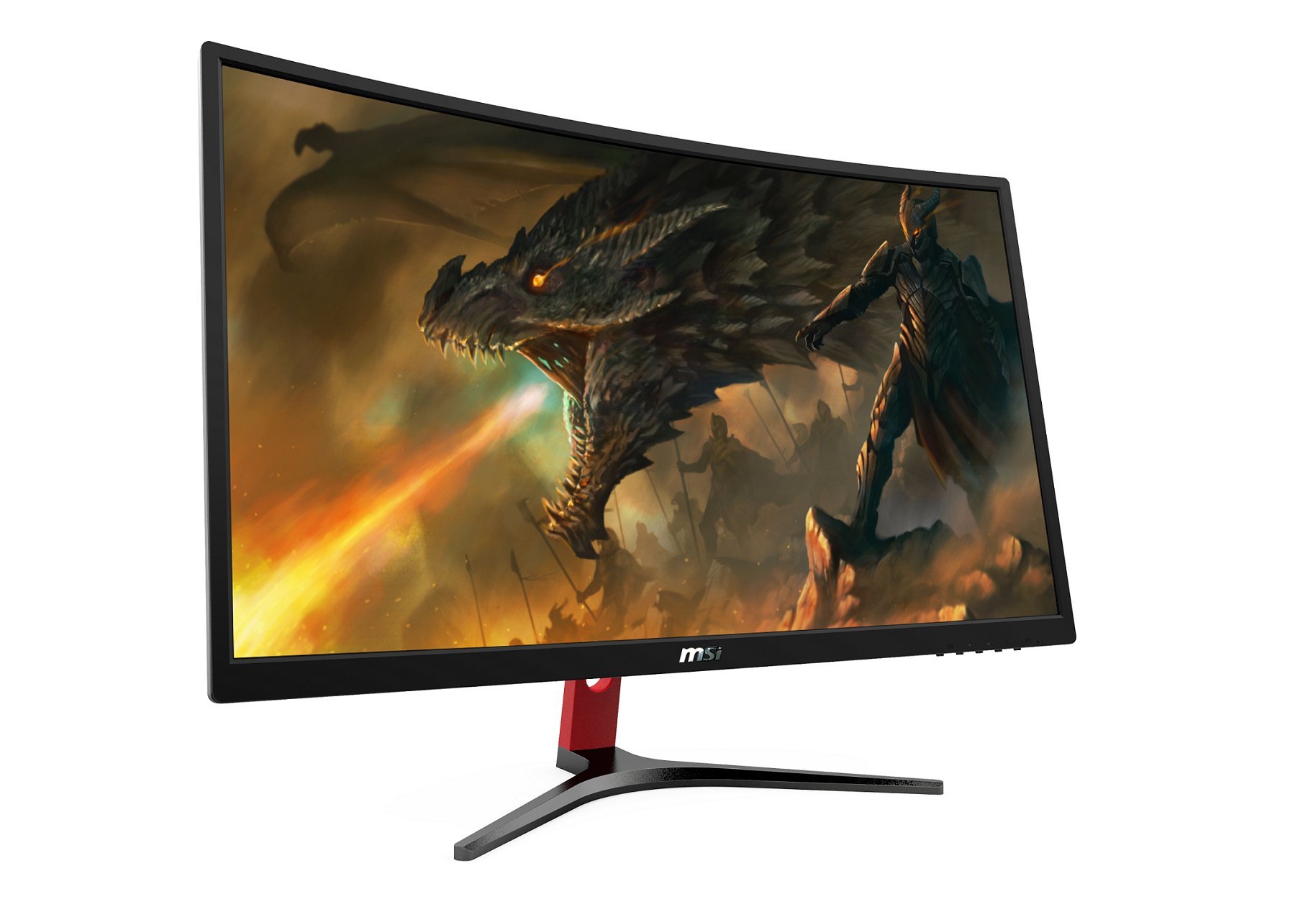What Is An FHD Monitor
An FHD monitor, also known as a Full High Definition monitor, is a display device that offers superior image clarity and crispness. It is designed to provide a resolution of 1920 x 1080 pixels, with a 16:9 aspect ratio, which means there are 1920 horizontal pixels and 1080 vertical pixels on the screen. This high pixel density offers a stunning visual experience with sharp and detailed images.
FHD monitors are widely used in various industries, including gaming, graphic design, video editing, and watching high-definition content. They are commonly available in sizes ranging from 21 to 27 inches, although larger options are also available for those who require a more immersive viewing experience.
These monitors utilize LCD (liquid crystal display) or LED (light-emitting diode) technology to produce vibrant and accurate colors. They offer a high contrast ratio, which ensures that the dark areas of an image are deep and rich, while the bright areas are vivid and well-defined. This makes FHD monitors suitable for tasks that require precise color reproduction, such as photo editing and graphic design.
One of the notable features of FHD monitors is the high refresh rate, typically ranging from 60Hz to 240Hz. The refresh rate refers to the number of times the monitor can redraw the screen image per second. A higher refresh rate results in smoother motion and reduces motion blur, making FHD monitors ideal for gamers and those who enjoy watching fast-paced videos.
Connectivity options on FHD monitors include HDMI, DisplayPort, and VGA, allowing users to connect various devices such as laptops, desktop computers, gaming consoles, and Blu-ray players. Some FHD monitors also offer built-in speakers, eliminating the need for separate audio devices.
Overall, FHD monitors offer excellent picture quality, vibrant colors, and smooth motion that enhances the viewing experience across various applications. Whether you are a gamer, a graphic designer, or a multimedia enthusiast, an FHD monitor can greatly enhance your productivity and entertainment.
Features of FHD Monitors
FHD monitors come with a range of features that contribute to their superior display quality and enhanced user experience. Let’s take a look at some of the key features:
1. High Resolution: The primary feature of FHD monitors is their resolution of 1920 x 1080 pixels. This high pixel density ensures sharp and detailed images, allowing you to enjoy precise visuals whether you are gaming, working, or watching videos.
2. Wide Aspect Ratio: FHD monitors typically have a 16:9 aspect ratio, which means the screen is 1.77 times wider than its height. This aspect ratio is well-suited for multimedia content, as it provides a wider field of view and makes the viewing experience more immersive.
3. LCD or LED Technology: FHD monitors use either LCD or LED technology to produce images. LCD (liquid crystal display) technology provides excellent color reproduction and wide viewing angles. LED (light-emitting diode) technology offers enhanced brightness, better energy efficiency, and slimmer designs.
4. High Refresh Rate: FHD monitors often feature a high refresh rate, typically ranging from 60Hz to 240Hz. The higher the refresh rate, the smoother the motion on the screen. A high refresh rate is especially important for gamers, as it reduces motion blur and provides a more fluid gaming experience.
5. Adjustable Stand: Many FHD monitors come with an adjustable stand that allows you to tilt, swivel, and adjust the height of the display according to your ergonomic preferences. This feature helps reduce strain on your neck, back, and eyes during long hours of use.
6. Connectivity Options: FHD monitors offer various connectivity options such as HDMI, DisplayPort, and VGA, allowing you to connect multiple devices like laptops, desktop computers, gaming consoles, and media players. These options provide flexibility and compatibility with a wide range of devices.
7. Built-in Speakers: Some FHD monitors have built-in speakers, eliminating the need for separate external speakers. These speakers may not provide audiophile-level sound quality, but they are convenient for everyday use and save valuable desk space.
8. Energy Efficiency: FHD monitors are designed to be energy-efficient, consuming less power compared to higher-resolution displays. This not only helps lower electricity costs but also reduces the environmental impact.
These are just a few of the notable features found in FHD monitors. The combination of high resolution, wide aspect ratio, advanced technologies, and convenient options makes FHD monitors a popular choice for various applications, from gaming and multimedia to professional tasks requiring precise visual representation.
Advantages of FHD Monitors
FHD monitors offer several advantages that make them a preferred choice for individuals seeking high-quality displays. Here are some of the key advantages of FHD monitors:
1. Enhanced Visual Clarity: Thanks to their 1920 x 1080 pixel resolution, FHD monitors deliver crisp and clear images. Text, graphics, and videos appear sharp and detailed, allowing for a more immersive viewing experience.
2. Vibrant Colors: FHD monitors utilize LCD or LED technology to produce vibrant and accurate colors. This is particularly beneficial for graphic designers, photographers, and video editors who rely on accurate color representation in their work.
3. Smooth Motion: FHD monitors with high refresh rates provide smoother motion, reducing motion blur and enhancing the clarity of fast-moving images. This makes them ideal for gamers and those who enjoy watching action-packed movies or sports.
4. Wide Viewing Angles: FHD monitors typically offer wide viewing angles, ensuring consistent image quality even when viewed from different positions. This allows multiple users to comfortably view the screen without color distortion or loss of detail.
5. Versatile Application: FHD monitors are suitable for a wide range of uses, be it gaming, multimedia, professional tasks, or general computer use. Their high resolution and color accuracy make them versatile tools for various industries and individuals.
6. Cost-Effective: Compared to higher-resolution monitors, FHD monitors are generally more budget-friendly. They offer excellent display quality at a more affordable price point, making them accessible to a wider range of consumers.
7. Energy Efficiency: FHD monitors consume less power compared to higher-resolution displays, resulting in lower energy bills. Additionally, their energy-efficient nature has a positive impact on the environment by reducing carbon emissions.
8. Compatibility: FHD monitors come with a variety of connectivity options, including HDMI, DisplayPort, and VGA, ensuring compatibility with different devices such as laptops, desktops, gaming consoles, and more.
9. Easy to Use and Maintain: FHD monitors are user-friendly and require minimal maintenance. They are easy to set up, with simple controls for adjusting settings like brightness and contrast. Cleaning and maintaining the screen is also straightforward.
With their superior image quality, versatile applications, and cost-effectiveness, FHD monitors offer an excellent choice for both professional and personal use. Whether you are a gamer, a creative professional, or a regular computer user, an FHD monitor can greatly enhance your visual experience.
Common Uses of FHD Monitors
FHD monitors find their applications in a wide range of industries and settings, catering to various professionals and enthusiasts. Here are some common uses of FHD monitors:
1. Gaming: FHD monitors are highly popular among gamers due to their fast refresh rates and crisp image quality. The high resolution and smooth motion allow gamers to enjoy immersive gameplay with enhanced detail and clarity.
2. Graphic Design and Digital Art: FHD monitors are widely used by graphic designers and digital artists who require precise color reproduction and sharp details. The accurate color representation ensures that the designs and artwork appear as intended.
3. Video Editing and Photography: Professionals in the field of video editing and photography benefit from the high resolution and color accuracy of FHD monitors. These monitors allow for accurate color grading, detailed frame-by-frame analysis, and precise editing.
4. Multimedia Consumption: FHD monitors provide an excellent platform for consuming multimedia content such as movies, TV shows, and online streaming services. The vibrant colors and sharp resolution enhance the overall visual experience.
5. Office Productivity: FHD monitors are commonly used in office settings to enhance productivity. The large screen space allows for multitasking, with multiple windows and applications open simultaneously for efficient workflow.
6. Educational Purposes: FHD monitors are utilized in educational institutions for presentations, online learning, and interactive classroom activities. The high resolution ensures that text and visuals are clear, making it easier for students to engage with the content.
7. Home Entertainment: FHD monitors serve as an excellent entertainment hub for home use. Whether it’s watching movies, playing video games, or streaming content, FHD monitors offer a theater-like experience within the comfort of your home.
8. Business and Communication: FHD monitors play a crucial role in business presentations, video conferences, and collaborative work environments. The high-quality display allows for clear communication, ensuring that everyone can see the content and participate effectively.
9. General Computer Use: From web browsing to document editing, FHD monitors provide a comfortable and visually pleasing experience for everyday computer tasks. The sharp resolution and vibrant colors make using the computer a more enjoyable and efficient experience.
These are just a few examples of the many common uses of FHD monitors. Their versatility and ability to cater to various industries and applications make them an essential tool for professionals, enthusiasts, and everyday users alike.
How to Choose the Right FHD Monitor for You
Choosing the right FHD monitor requires careful consideration of various factors to ensure that it meets your specific needs and preferences. Here are some essential factors to consider when selecting an FHD monitor:
1. Screen Size: Determine the ideal screen size based on your viewing distance and available desk space. FHD monitors typically range from 21 to 27 inches, but larger options are also available for a more immersive viewing experience.
2. Resolution: Since FHD monitors have a fixed resolution of 1920 x 1080 pixels, the focus should be on finding a monitor with excellent color accuracy, sharpness, and clarity within this resolution range.
3. Panel Technology: Consider the panel technology used in the monitor. In-plane switching (IPS) panels provide wider viewing angles and accurate color reproduction, while twisted nematic (TN) panels offer faster response times suitable for gaming.
4. Refresh Rate: If you are a gamer or watch fast-paced videos, opt for a monitor with a higher refresh rate (e.g., 120Hz or 144Hz) to ensure smoother motion and reduce motion blur.
5. Connectivity: Check the available connectivity options on the monitor, such as HDMI, DisplayPort, and VGA, to ensure compatibility with your devices. Also, consider the number of ports needed for your specific setup.
6. Ergonomic Features: Look for monitors with adjustable stands that allow you to tilt, swivel, and adjust the height of the display. This ensures ergonomic comfort during long hours of use.
7. Additional Features: Consider any additional features that may be important to you, such as built-in speakers, USB ports, blue light filters, or flicker-free technology. These features can enhance your overall viewing experience.
8. Budget: Determine your budget range and explore monitors that offer a good balance between price and performance. Remember that higher-priced options may include advanced features, but make sure they align with your specific needs.
9. Reviews and Recommendations: Read reviews and seek recommendations from trusted sources or individuals who have firsthand experience with the monitors you are considering. This can provide insights into the monitor’s performance and reliability.
By considering these factors and prioritizing your specific requirements, you can choose an FHD monitor that meets your needs and delivers an optimal visual experience for your intended use.
Tips for Using and Maintaining Your FHD Monitor
To ensure optimal performance and longevity of your FHD monitor, it’s important to follow some essential tips for its usage and maintenance. Here are some tips to help you get the most out of your FHD monitor:
1. Proper Placement: Position your monitor at eye level or slightly below to ensure a comfortable viewing experience. Avoid placing it in direct sunlight or near sources of heat to prevent overheating.
2. Screen Cleaning: Use a microfiber cloth or a screen-cleaning solution specifically designed for monitors to clean the screen. Avoid using harsh cleaning agents or rough materials that may damage the screen surface.
3. Avoid Screen Pressures: Do not exert excessive pressure or touch the screen with sharp objects. This can cause irreparable damage to the screen or affect the touch-sensitive features (if applicable).
4. Adjust Screen Settings: Adjust the brightness, contrast, and color settings of the monitor to your preference. These settings can affect image quality and reduce eye strain, especially in different lighting conditions.
5. Enable Power Saving Features: Utilize the power-saving features available on your monitor, such as automatic sleep mode or screen dimming, to conserve energy and extend the life of your monitor components.
6. Use Screensavers or Blank Screen: Enable screensavers or set your computer to display a blank screen after a period of inactivity. This helps prevent static images from burning into the screen, known as “screen burn-in.”
7. Disconnect During Thunderstorms: Unplug your FHD monitor during thunderstorms or when not in use for an extended period. Power surges or electrical disturbances can damage the monitor’s internal components.
8. Avoid Exposure to Extreme Conditions: Keep your FHD monitor in a cool and dry environment to prevent damage from humidity or extreme temperatures. Excessive heat or cold can negatively impact the performance of the monitor.
9. Update Drivers and Firmware: Regularly check for updates and install the latest drivers and firmware provided by the manufacturer. These updates often include bug fixes, performance enhancements, and compatibility improvements.
10. Follow User Manual for Specific Maintenance: Refer to the user manual provided with your FHD monitor for specific maintenance instructions. The manufacturer’s guidelines may include additional recommendations tailored to your specific monitor model.
By following these tips, you can ensure the optimal usage, performance, and longevity of your FHD monitor. Regular maintenance and proper care will help preserve its display quality and extend its lifespan, providing you with an enjoyable viewing experience for years to come.
Frequently Asked Questions About FHD Monitors
Here are some frequently asked questions about FHD monitors:
1. What does FHD stand for?
FHD stands for Full High Definition. It refers to a display resolution of 1920 x 1080 pixels.
2. Can I use an FHD monitor for gaming?
Absolutely! FHD monitors are widely used by gamers due to their high refresh rates and smooth motion. They provide an immersive gaming experience with sharp visuals and minimal motion blur.
3. Are FHD monitors suitable for professional graphic design work?
Yes, FHD monitors are suitable for professional graphic design work. They deliver accurate color reproduction and sharp details, making them ideal for tasks that require precise image representation.
4. Can I connect multiple devices to an FHD monitor?
Yes, FHD monitors typically offer a range of connectivity options such as HDMI, DisplayPort, and VGA. This allows you to connect multiple devices like laptops, desktop computers, gaming consoles, and media players.
5. What is the difference between LCD and LED technology in FHD monitors?
LCD (liquid crystal display) and LED (light-emitting diode) are two different technologies used in FHD monitors. LCD technology provides excellent color reproduction and wide viewing angles, while LED technology offers enhanced brightness, energy efficiency, and slim designs.
6. Can I use an FHD monitor as a television?
Yes, you can use an FHD monitor as a television by connecting it to a cable or satellite box, gaming console, or media player that supports HDMI or other compatible connectivity options. Some FHD monitors also have built-in speakers for audio output.
7. Do FHD monitors consume a lot of power?
FHD monitors are generally more energy-efficient compared to higher-resolution displays. They consume less power, resulting in lower energy bills and reduced environmental impact.
8. Are FHD monitors compatible with Mac computers?
Yes, FHD monitors are compatible with Mac computers. They can be connected to Mac devices using appropriate adapters or cables, such as HDMI to Thunderbolt or HDMI to Mini DisplayPort.
9. Can FHD monitors reduce eye strain?
FHD monitors with adjustable settings for brightness, contrast, and blue light filters can help reduce eye strain. Taking frequent breaks and practicing proper lighting techniques can also contribute to reducing eye fatigue.
10. Are FHD monitors worth it?
FHD monitors offer excellent image quality, vibrant colors, and smooth motion, making them a popular choice for various applications. They provide a balance between performance and price, making them a worthwhile investment for both personal and professional use.
These are some of the common questions about FHD monitors. If you have any further queries, it’s recommended to refer to the manufacturer’s documentation or seek assistance from knowledgeable professionals.
Conclusion
FHD monitors, or Full High Definition monitors, offer a host of advantages that make them a popular choice for various applications. With their high resolution, vibrant colors, and smooth motion, FHD monitors provide an immersive visual experience whether you are gaming, designing graphics, editing videos, or simply enjoying multimedia content.
These monitors offer sharp and detailed images, thanks to their 1920 x 1080 pixel resolution, making them suitable for both professional and personal use. The wide aspect ratio, coupled with advanced panel technologies like IPS or TN, ensures wide viewing angles and accurate color reproduction.
Proper usage and maintenance of FHD monitors can further enhance their performance and longevity. Following recommendations such as proper screen placement, regular cleaning, adjusting screen settings, and updating drivers and firmware contribute to optimal usage and preservation of display quality. When choosing an FHD monitor, consider factors like screen size, resolution, panel technology, refresh rate, connectivity, and additional features. Finding the right monitor that suits your needs and budget ensures that you make the most of your investment. In conclusion, FHD monitors provide outstanding visual clarity, vibrant colors, and smooth motion for various applications. Their versatility and affordability make them valuable tools for gamers, designers, professionals, and everyday users alike. By selecting and maintaining an FHD monitor that meets your specific requirements, you can enjoy an enhanced visual experience and boost your productivity in a variety of tasks.









